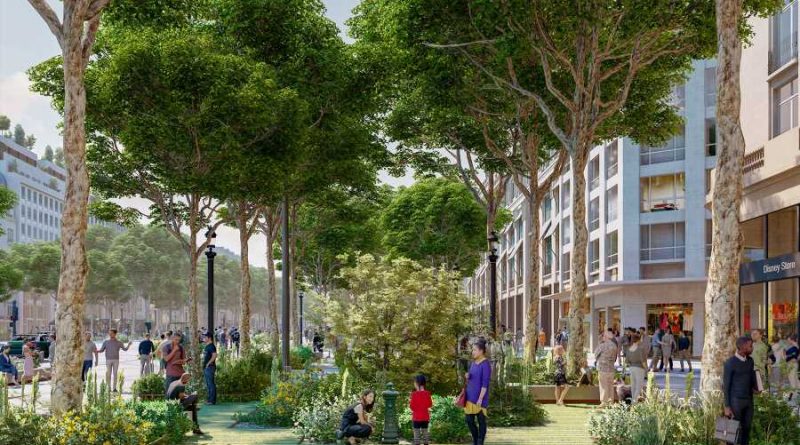Paris Approves Plan to Transform Champs-Élysées Into Urban Oasis After 2024 Olympics
Paris will transform its famous Champs-Élysées into an “extraordinary garden” after the 2024 Olympics, in an attempt to bring locals back to what has become a crowded tourist attraction.
Over the weekend, Mayor Anne Hidalgo approved a $304 million (€250 million) plan, meant to bring the Champs-Élysées back to its intended purpose in the city: as a place of relaxation, The Guardian reported.
A major component of the renovation is greatly reducing the amount of vehicle traffic on the Champs-Élysées. The plan — by architect Philippe Chiambaretta and his firm PCA-Stream —will see the lanes of car traffic cut down and reclaimed by pedestrian space, with lots of new greenery planted.
A video rendering of the plan can be found here.
The Place de la Concorde, at one end of the Champs-Élysées, will be transformed before the 2024 Olympic Games while the rest of the project will proceed following the Olympics.
“We want the Champs-Élysées to remain a centre of attraction in the world, we want tourists to keep coming but we want the Parisians who used to come here 100 years ago to come back,” Jean-Noël Reinhardt, president of the Champs-Élysées committee told The Guardian in 2019, when the plan was originally presented to City Hall.
Over the last 30 years, the street has fallen into disrepair, the Champs-Élysées committee says. Between the expensive cafes and designer clothing stores, the cobblestones of the Champs-Élysées are starting to push up from the ground. The street is more polluted than Paris’s busiest highways and pavements are cracking.
Hidalgo told Le Journal du Dimanche that the project is one of several that will transform the city “before and after 2024”, including a project to turn the area around the Eiffel Tower into “an extraordinary park.”
The Champs-Élysées has existed in Paris since the days of King Louis XIV. The gardens were laid out in 1667, although the avenue wasn’t given its name (meaning “Elysian Fields” of Greek mythology) until 1709. By the end of that century, it had become a popular destination for Parisians to walk and picnic.
Famously, Parisians came out to the Champs-Élysées in 1944 to celebrate the end of the city’s German occupation. Today, celebrations like World Cup wins and Bastille Day parades still bring out revelers, but the avenue has transformed into a shopping destination for tourists, largely avoided by locals.
Cailey Rizzo is a contributing writer for Travel + Leisure, currently based in Brooklyn. You can find her on Twitter, Instagram, or at caileyrizzo.com.
Source: Read Full Article




